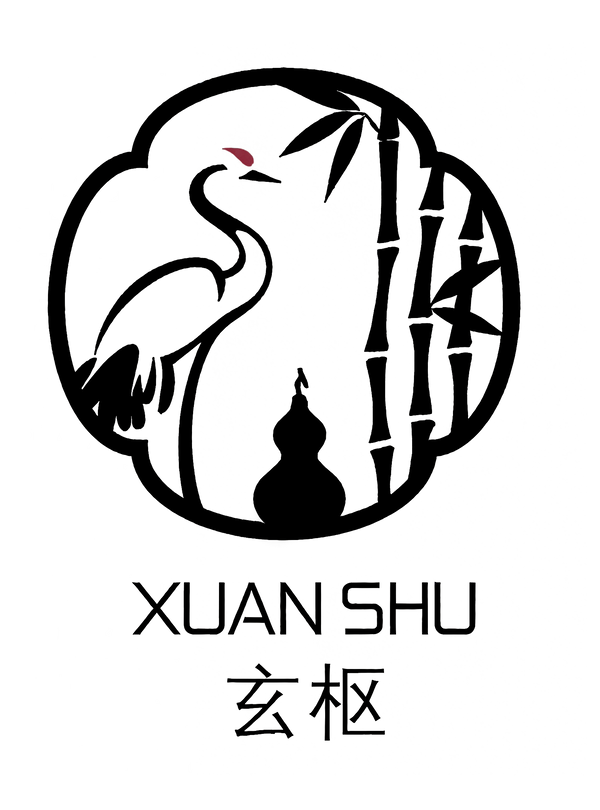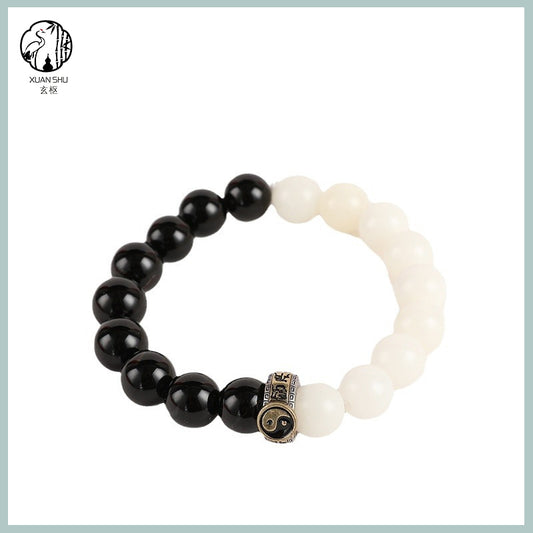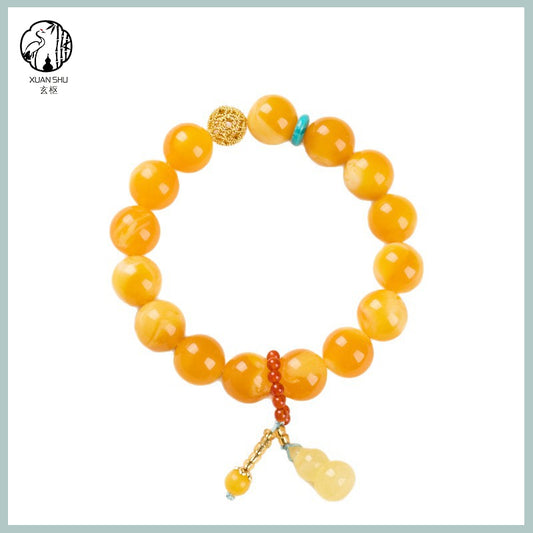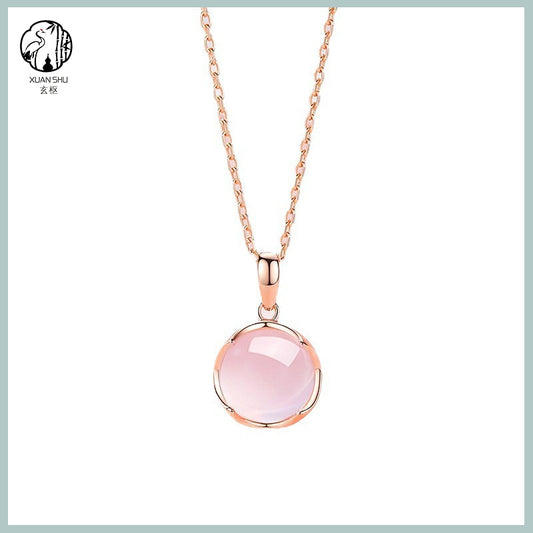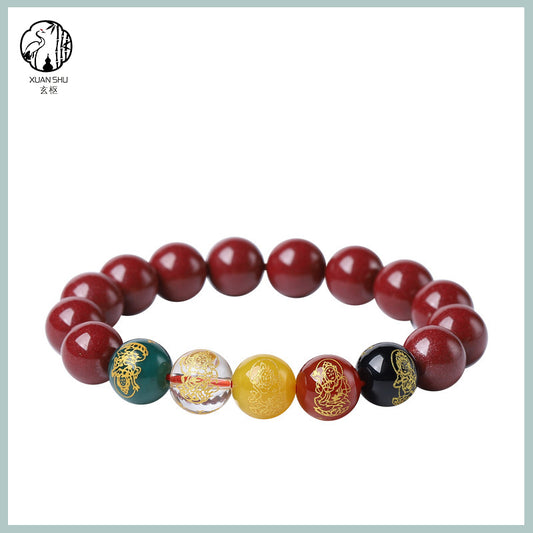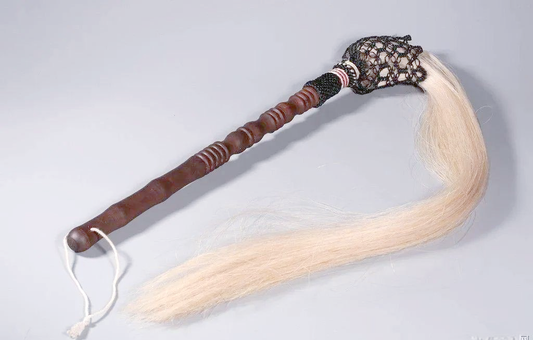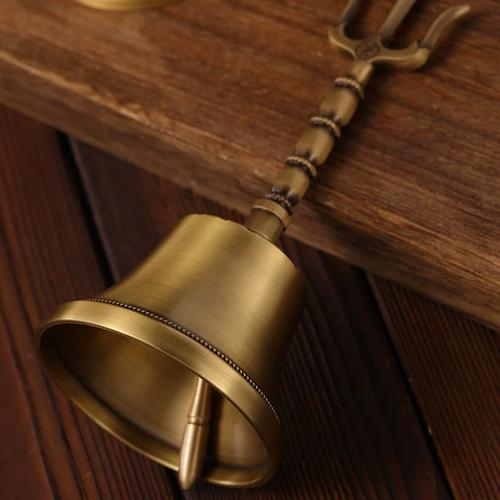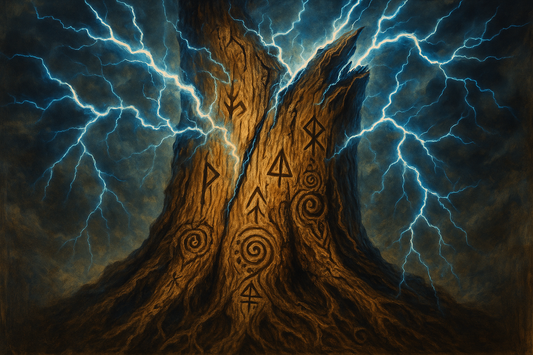What Does The Dragon Symbolize In Taoism?
In the vast pantheon of Chinese traditional culture, the dragon has always held a position of supreme reverence. Within the Daoist tradition, this mysterious creature carries meaning far beyond common belief—it becomes a profound symbol that connects Heaven, Earth, and Humanity, bridging the metaphysical and the physical realms.
To truly understand the dragon in Daoism, one must look beyond its surface image and explore the deeper dimensions it embodies: cosmology, spiritual cultivation, and the Daoist view of divinity.

A Living Symbol of Cosmic Energy
In the Daoist tradition, the dragon is regarded as a tangible embodiment of the Dao itself. The Azure Dragon (Qinglong) is not only a constellation composed of the seven eastern mansions, but also a symbol of the primordial life force of the cosmos. Daoist cosmology, as recorded in the Daozang (Daoist Canon), describes the Azure Dragon as arising from the "Qi of the Great Beginning" (Taichu zhi Qi), governing the generative forces of the East. The Wuzhen Pian (Awakening to the Real) further states, “The Azure Dragon of the East belongs to Wood and governs the mechanism of growth,” highlighting its deep connection to the innate, pre-heavenly qi.
This symbolism is also vividly reflected in Daoist architecture. In Daoist temples, dragon columns are often carved with 360 scales, representing the degrees of the celestial circle and symbolizing the natural cycles of the universe and the principle of “Dao follows nature.” The dragon-head roof ornaments, known as chiwen, serve not only as decorative features but also as spiritual seals that guard the temple’s qi pathways, stabilize feng shui, and harmonize the cosmic energies of the space.
As a central symbol in Daoism, the Azure Dragon embodies not only the metaphysical principle of cosmic creation but also plays a vital role in shaping sacred spaces. It exemplifies the Daoist worldview of harmony between Heaven and humanity, and the wisdom of cultivating energetic balance within both body and environment.
The Subtle Alchemy of Internal Cultivation
In the Daoist internal alchemy (neidan) tradition, the image of “Dragon and Tiger Mating” is one of the most vital symbols, representing the fusion of yin and yang and the harmonization of qi and blood. The Zhong Lü Chuan Dao Ji (Transmission of the Dao from Zhong and Lü) of the Tang dynasty details the practice of "subduing the dragon and taming the tiger." In this context, the "dragon" symbolizes the liver hun (ethereal soul) and the pre-heavenly yang qi—vigorous and active, prone to rising and dispersing. It must be gently guided and restrained through the practitioner’s pure intention, known as zhenyi.
During meditation, practitioners often visualize a golden dragon coiling in the lower dantian (elixir field), a method known as “nurturing the true seed in the chamber of spirit.” This visualization symbolizes the unification of spirit and qi, and the gestation of true essence.
By the Ming dynasty, the Xingming Guizhi (Principles of Life and Nature) further explained that, at the critical stage known as “the great medicine crossing the pass” (dayao guoguan), practitioners may experience spontaneous sensations of dragon-like qi currents rising along the spine. This phenomenon is described as “the Yellow River flowing backward, and the inner channels opening naturally,” referring to the upward movement of the pre-heavenly true qi through the Governing Vessel (Du Mai), reaching the Niwan Palace (crown center)—a key marker of internal transformation.
Here, the dragon is more than metaphor—it is the living embodiment of qi’s movement within the body. It serves as a guide for the adept on the journey from form to spirit, back to the origin of the Dao.
The Spiritual Ladder of the Immortal Realm
Within the Daoist pantheon, dragons occupy a triadic role in the celestial hierarchy. As mounts, they serve as divine vehicles for celestial deities, enabling their passage through the Three Realms. As manifestations, dragons represent the transformed appearances of exalted immortals revealing their power. And as guardians, they embody the original forms of thunder gods and divine generals in the celestial bureaucracy.
The famous legend of Xu Xun slaying the flood dragon is, in essence, a metaphor for a key stage in spiritual cultivation—using the sword of wisdom to sever the deluded mind. Meanwhile, Taiyi Jiuku Tianzun’s ability to transform a nine-headed lion into a dragon exemplifies Daoism’s transcendent insight: “All forms may change, but true nature remains eternal.”
Through these roles, the dragon serves not only as a mythic creature, but as a symbol of Daoist metaphysical truths and the progressive ascent of spirit on the ladder of immortality.
A Symbol of Virtue and Spiritual Aspiration
Moral Integrity of the Ruler: In ancient China, the emperor was regarded as the incarnation of the dragon, possessing supreme authority. As such, the ruler (the dragon) was expected to embody Daoist moral virtues—such as compassion, humility, tolerance, honesty, frugality, diligence, inner tranquility, and alignment with the natural order. The dragon thus symbolized the monarch’s virtue and philosophy of governance, reflecting Daoism’s pursuit of the highest moral ideals.
The Quest for Immortality and Enlightenment: Daoism emphasizes harmony with nature, reverence for life, and the pursuit of longevity and spiritual transcendence. As a key Daoist symbol, the dragon represents the ultimate moral refinement and the ideal of living in unity with the natural world. The dragon and tiger metaphorically represent yang and yin, respectively; their pairing symbolizes the harmonious balance of opposites, embodying the Daoist understanding of cosmic unity and the interdependence of all things.

The Transcendent Transformation of Folk Belief
Daoism elevated popular worship of the Dragon Kings into a refined philosophical system. The Scripture of Petitioning for Rain from the Supreme Cavernous Source (Taishang Dongyuan Qingyu Jing) stipulates that Dragon Kings must carry the “Primordial Mandate Talisman” (Yuanshi Fuming) when bringing rain—effectively integrating natural worship into Daoism’s cosmic ethical framework.
The Dragon Boat Festival, originally rooted in folk rituals, was transformed into a Daoist rite of exorcising plagues and refining souls (songwen liandu), where the dragon became a symbol of purification, dispelling turbid yin energies.
This transformation was not merely a layering of religious beliefs, but a concrete expression of Daoism’s principle of “cultivating truth through the ordinary” (ji su xiu zhen), merging folk customs with inner cultivation and cosmic order.
A Symbol of Natural Forces and Cosmic Order
Master of Wind, Rain, Thunder, and Lightning: In Daoist belief, dragons have the power to summon clouds and bring rain, playing a crucial role in regulating weather and supporting agricultural life. Dragon Kings are deities who govern bodies of water and adjust rainfall in accordance with heavenly will or human prayer, reflecting the dragon’s close connection to natural forces. Dragons also work alongside other celestial beings such as the Lords of Wind and Rain to deliver seasonal rains and prevent destructive forces that could threaten the harmony of the cosmos.
Embodiment of Stellar Worship: In Daoism, the Azure Dragon (Qinglong) is one of the Four Symbols (Si Xiang), representing the East and the season of spring. Within the 28 lunar mansions (Ershiba Su), the seven constellations—Horn (角), Neck (亢), Root (氐), Room (房), Heart (心), Tail (尾), and Winnowing Basket (箕)—form the complete dragon-shaped constellation known as the “Azure Dragon of the East” (Dongfang Canglong). The imagery and movements of the Azure Dragon in the stars symbolize cosmic order, seasonal cycles, and the harmonious rhythm of the universe.
The Dragon in the Five Elements
Within the Five Elements (Wu Xing) framework, the dragon exhibits a unique dynamic nature, with its symbolic meaning shifting according to direction and function. As the Azure Dragon of the East, it represents the element Wood, embodying the qi of spring and corresponding to the hun (ethereal soul) and liver in Daoist inner alchemy. The Central Yellow Dragon, by contrast, symbolizes Earth virtue, resonating with imperial authority and the qi of the central palace.
What makes the dragon especially distinctive is its ability to harmonize all five elements. It can summon clouds and bring rain—balancing Water and Fire—and even change color to match its environment, manifesting across all five directions. In feng shui, the contours of mountain ranges are categorized into five types of “dragon forms” (longshi), while in the human body, the du mai (governing vessel) is also known as the “Azure Dragon” meridian.
On imperial dragon robes of the Ming and Qing dynasties, the five-clawed golden dragon is adorned with 81 scales, echoing the sacred number nine (the ultimate yang), and its five claws correspond to the Five Elements—symbolizing complete elemental integration. In Daoist temples, five-colored dragon banners and dragon-shaped ritual implements embody these elemental qualities, making the dragon a vivid symbol of the “movement of Dao and qi.”
This ability to transcend fixed elemental boundaries and respond flexibly to changing conditions exemplifies the Daoist teaching found in the Dao Fa Hui Yuan: “Manifesting according to the Dao” (sui dao xian hua).

Conclusion
In contemporary society, the image of the dragon in Daoism continues to evolve. Influenced by environmental consciousness, some Daoist temples have begun to emphasize the dragon’s new role as a “guardian of aquatic ecosystems.” In dialogues between quantum physics and Daoist energy practices (daoyin), the dragon-shaped meridians of qi are now reinterpreted as macroscopic representations of the body’s bioelectric field. This modern transformation of an ancient symbol perfectly reflects the enduring vitality of Daoism’s principle of “teaching according to local conditions” (sui fang she jiao).
From constellations to meridians, from deities to inner cultivation, Daoism has constructed a complete symbolic system—a “dragon cosmology.” Within this framework, the dragon is no longer just an object of totemic worship, but a living guide for Daoist practitioners to understand the universe, refine body and mind, and realize the true self.
It stands as both a concrete embodiment of “Dao follows nature” (dao fa ziran) and a vivid cultural expression of the Daoist ideal of unity between Heaven and humanity (tian ren he yi).
